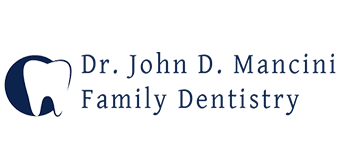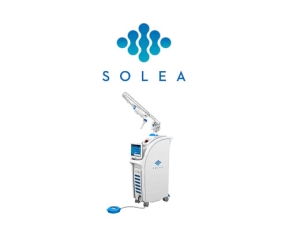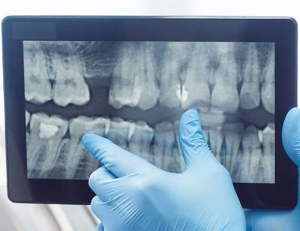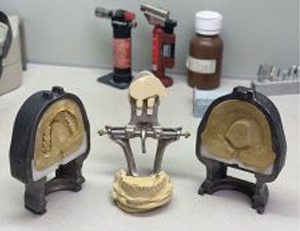Family Dentistry
Family dentistry is a branch of dentistry that focuses on providing comprehensive dental care for individuals of all ages, from infants to seniors. Family dentists are trained to treat a wide range of dental conditions, including preventive care, restorative care, and cosmetic dentistry. They also provide education and counseling on oral hygiene and healthy lifestyle habits.
Benefits of Family Dentistry
There are many benefits to choosing a family dentist for your family’s dental care. Here are just a few:
Convenience: Family dentists offer a wide range of services under one roof, so you can get all your family’s dental care in one place. This can save you time and money.
Personalized care: Family dentists take the time to get to know you and your family’s dental needs. They will develop a personalized treatment plan that is tailored to your specific needs.
Established rapport: Family dentists build relationships with their patients over time. This can make it easier for you to feel comfortable and at ease during your dental appointments.
Early detection and prevention: Family dentists can detect and treat dental problems early on, when they are usually easier and less expensive to treat. They can also provide education and counseling on oral hygiene and healthy lifestyle habits to help prevent dental problems from developing in the first place.
Same Day Crowns
Imagine a chipped tooth, a cracked molar, a sudden dental drama casting a shadow over your day. Traditionally, the fix meant multiple appointments, temporary crowns, and weeks of waiting. But enter CEREC, a revolutionary technology reshaping the dental landscape, offering a shining solution: same-day crowns.
CEREC
CEREC, standing for Chairside Economical Restoration of Esthetic Ceramics, is a marvel of modern dentistry. It transforms the crown-making process, ditching the waiting game for streamlined efficiency. Instead of sending impressions off to a lab, CEREC lets your dentist become a sculptor in minutes.
Here’s How It Works
Capture: A tiny camera scans your tooth, creating a 3D digital image. No messy molds, just high-tech precision.
Design: Like a virtual artist, your dentist sculpts the perfect crown on the computer screen, ensuring a custom fit and natural look.
Mill: The magic happens. A milling machine whirls to life, carving the crown from a block of durable ceramic, right there in the dental chair.
Place: Within an hour, the crown is polished and cemented onto your tooth, restoring your smile and bite in a single visit.
Convenience: No more temporary crowns, dietary restrictions, or juggling appointments. CEREC fits seamlessly into your busy schedule.
Cosmetic Dentistry
Cosmetic dentistry is a specialized branch of dental care that focuses on improving the aesthetics of teeth, gums, and the overall smile.
Through a variety of procedures, cosmetic dentists aim to enhance the appearance of teeth, address imperfections, and create a more attractive and confident smile.
Common Cosmetic Dentistry Procedures
Cosmetic dentistry encompasses a range of procedures designed to address various dental concerns and enhance the overall smile:
Teeth whitening: Teeth whitening is a popular procedure that lightens the color of teeth, removing stains and discoloration caused by food, beverages, and aging. Various teeth whitening options are available, including professional in-office treatments and at-home whitening kits.
Dental bonding: Dental bonding involves applying a tooth-colored resin material to the surface of a tooth to restore its shape, size, or color. Bonding can be used to repair chipped or cracked teeth, close gaps between teeth, and even lengthen the appearance of short teeth.
Dental veneers: Dental veneers are thin, custom-made shells that are bonded to the front surface of teeth to mask imperfections and enhance the appearance of the smile. Veneers can be used to address a variety of cosmetic concerns, such as discoloration, chipped or cracked teeth, misaligned teeth, and gaps between teeth.
Dental Hygiene
Dental hygiene is the practice of keeping your mouth clean and healthy to prevent cavities, gum disease, and other problems. It involves a daily routine at home, combined with regular professional cleanings by a dentist or dental hygienist.
Brushing and Flossing
Brushing your teeth twice a day with a fluoride toothpaste is essential. Fluoride strengthens tooth enamel, making it resistant to decay. Aim for two minutes each time, brushing all surfaces of your teeth, including the tongue.
Flossing daily removes plaque and food particles from between teeth, where brushing can’t reach. Plaque is a sticky film of bacteria that builds up on teeth and can harden into tartar (calculus) if not removed. Tartar can only be removed by a dental professional.
Professional Cleanings
Regular dental cleanings, typically recommended every six months, are crucial for maintaining good oral health.
During a cleaning, a hygienist will:
- Scale your teeth to remove tartar buildup.
- Polish your teeth to remove stains and make them smoother, making it harder for plaque to adhere.
- Examine your mouth for signs of cavities, gum disease, or other oral health issues.
- Provide personalized oral hygiene instructions and answer any questions you may have.
Solea
Solea, a 9.3-micron CO2 dental laser, has emerged as a promising technology aiming to transform the dental experience. Unlike traditional drills that utilize vibration and friction to remove tooth structure, Solea employs a computer-controlled laser beam to precisely vaporize hard and soft tissues in the mouth. This innovative approach presents several potential benefits for both patients and dentists.
Significant Advantages
One of the most significant advantages of Solea laser dentistry lies in its ability to minimize discomfort. The laser beam targets specific areas with minimal vibration or heat generation, potentially reducing the need for anesthesia in many procedures. This can be particularly advantageous for patients with anxiety or needle phobia associated with traditional injections.
Furthermore, Solea offers enhanced precision during dental procedures. The laser beam allows for a more controlled and targeted approach compared to drills, potentially minimizing damage to surrounding healthy tissues. This precision can be crucial for delicate procedures like cavity removal near nerves or gum sculpting.
Faster Healing Time
Additionally, Solea boasts the potential for reduced bleeding and faster healing times. The laser beam can cauterize blood vessels as it cuts, minimizing bleeding during procedures. This not only improves patient comfort but also enhances visibility for the dentist, leading to potentially faster and more efficient treatment.
Digital X-Rays
Dental radiographs, commonly known as dental x-rays, are extremely useful for the diagnosis of different ailments that could endanger the health of your mouth, teeth, and gums. Of course, these services are not just exclusive to adults. It is an extremely common need to view the healthy development of teeth and gums for children, particularly those that have not yet crowned above the surface. Children are at a much higher risk than adults of developing tooth decay, especially around the time they are losing their baby teeth and trading them in for their adult biters and molars.
What are Dental X-Rays?
Radiographs, or x-rays, have been an important development in the field of medicine for many years. X-rays are a great and versatile tool that helps to diagnose and identify exactly the root cause of an issue.
X-rays, in general, are great for:
- Identifying whether there is enough space, primarily when there are incoming teeth for the child.
- Estimating whether baby teeth are being shed in an appropriate amount of time to make room for the stronger, adult teeth.
- Monitoring tooth decay.
- Diagnosing cavities and tooth decay to stop the problem from developing further.
- Periodically used to examine more dangerous issues, such as tumors, injuries and to plan further treatment.
Snoring Prevention
Sleep apnea is a common disorder, one that many people associate with irritating snoring. However, this condition is more than just nighttime noise. Those with sleep apnea experience an obstruction of air, which can lead to a number of symptoms. From shortness of breath to chronic fatigue, it’s a problem that typically requires (relatively) immediate treatment.
How Can a Dentist Help with Sleep Apnea?
Dentists work with the muscles in the mouth and throat on a regular basis, so they understand how air can become constricted at night and what it takes to restore the breath. There are two major types of sleep apnea, but the most common one is OSA (Obstructive Sleep Apnea).
With this condition, the passage of air is blocked for a few seconds or less at a time. It may be accompanied by snoring, but it doesn’t have to be. In some cases, the person will simply pause their breath and then restart again without anyone being the wiser. They may wonder why they’re tired the next day, and have no explanation.
Dental Laboratory
We have made many new additions to our dental laboratory. Our patients enjoy the fact that their dentures and partial dentures can often be repaired while they wait.
We are able to make arrangements to reline dentures over a weekend so patients are not without their dentures during the week.
All of the dental units are equipped with Sterisil technology, the total solution in eliminating dental unit waterline bacteria.
- Sterisil Technology (Reduces Waterline Bacteria).
- Onsite Full and Partial Denture Repairs.
- Plasma Welder (Allows for the repair of cast frame work/broken clasps).
- Replace Denture Teeth.
- Custom made Occlusal Guards and Athletic Mouth Guards.
- Reduced wait time.
Patient Education
Our objective states that leading edge technology is to be tastefully observable and readily available. We now offer GURU patient education software. This is chair side accessible with PC Tablet laptops located in the treatment rooms.
Customized Treatment
Our treatment presentations are customized to fit the needs of each patient.
We encourage our patients to play an active role in their dental care with the help of educational brochures and communication through our highly trained staff.
Our Educational Material
- Easily accessible information.
- Trained employees who can provide assistance.
- Additional Internet Sites to provide additional information.











